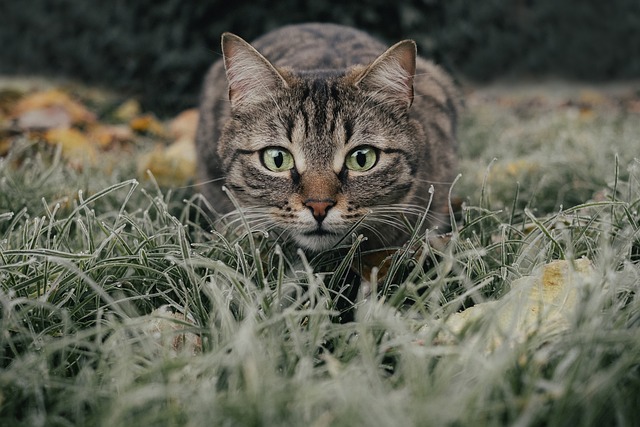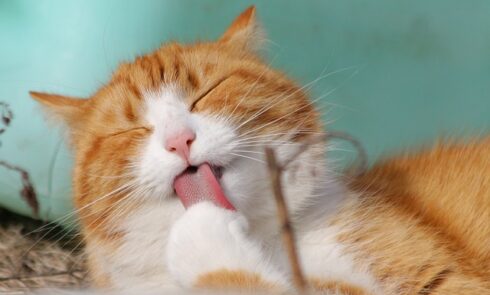In the context of New Zealand, where an escalating cat population is a matter of pressing concern, the activity of desexing one’s feline companion carries implications far beyond merely restraining the proliferation of unwanted kittens. Often pet proprietors grapple with this question: “what will be my financial outlay to desex a cat in NZ?” However, it’s essential to perceive this expenditure as not just an obligation but a prudent investment towards ensuring your beloved pet’s long-term health and welfare. This also contributes significantly to a more comprehensive solution for animal welfare within society.
The process of desexing extends its benefits way past averting unnecessary litters – it stands as a bulwark against numerous potential health hazards and behavioural anomalies. Regularly scheduled neutering can substantially mitigate risks associated with reproductive cancers specific to cats, urinary tract complications, and hormone-induced behaviours such as territorial marking or aggression. Thus, choosing to have your cat desexed isn’t simply an optional procedure; rather it forms an indispensable aspect of responsible pet ownership that every conscientious cat owner should give thoughtful consideration.
The Process of Cat Desexing: What Does it Involve?
The ritual of making a feline creature unproductive, otherwise known as spaying or neutering, stands as an essential measure in controlling the cat populace and enhancing their collective health status. Yet, poised on the brink of this significant decision, you may find yourself grappling with one key query: “At what age should I render my cat infertile?”. A multitude of veterinary professionals propose that kittens undergo the procedure when they are but 4-6 months old, ideally before they encounter their inaugural heat cycle.
To delve deeper into this intricate operation – desexing consists of a surgical intervention undertaken under total anesthesia. For male specimens, it means parting ways with their testes while for female counterparts it usually signifies undergoing an ovariohysterectomy – a process encompassing removal of ovaries and uterus. This meticulous procedure is executed by seasoned veterinarians and necessitates several hours within hospital confines for comprehensive recuperation; however, recovery time could oscillate based on each individual feline’s overall health condition.
Advantages of Desexing Your Feline Companion

A profound boon of making the choice to neuter your feline comrade is found in the propitious influence it wields on their enduring health and demeanor. A cat left in its original state might indulge in combative or harmful antics such as marking territories, wandering, brawling, and elevated noise-making. Neutering has the potential to lessen, if not completely eradicate these behaviors, leading to a more tranquil and undisturbed domestic atmosphere. Cats that have been spared from desexing are vulnerable to several medical ailments including specific varieties of cancers and infections.
In pondering over this operation, many often inquire “Why does desexing carry such exorbitance?” In truthfulness, the expense mirrors the all-encompassing care your feline receives during this process. It encompasses a preliminary surgical examination, anesthesia administration, execution of the surgery itself along with post-operative monitoring and occasionally inclusive pain alleviation for convalescent purposes. This pivotal procedure calls upon an adept vet’s practiced hands confirming that your beloved pet is under optimum safety thus rationalizing its cost.
Possible Health Risks and Complications in Cat Desexing
While acknowledging the bountiful merits of neutering a feline, it’s essential to face head-on that this operation isn’t entirely free from possible health hazards and complications. This medical procedure, like its countless counterparts, holds within it the potential for negative anaesthetic reactions. Cats can exhibit a spectrum of responses – some may manifest hives or breathing difficulties and on rare occasions, might even slip into anaphylactic shock. Even though most cats bounce back quickly post-anaesthesia, vigilant observation by pet guardians is crucial to catch any abnormal behaviour in their furry companions after the procedure.
Furthermore, surgical snags related to infection or excessive blood loss are not beyond the realms of possibility but are less frequent. Symptoms such as pain at incision site swelling or reddening could point towards an infection demanding immediate veterinary attention. Also worth noting is that unforeseen bleeding during surgery while seemingly alarming, is part-and-parcel risk associated with any surgical intervention. It’s kept under strict control through rigorous pre-surgical procedures including comprehensive bloodwork to evaluate overall feline health and organ functionality.
Additionally, the possibility of post-operative complications cannot be overlooked. These can range from minor issues such as loss of appetite or lethargy to more severe problems like prolonged pain, vomiting and diarrhoea. It’s imperative for cat owners to keep a keen eye on their pet’s behaviour and physical condition after surgery in order to ensure prompt medical intervention if required.
- Negative anaesthetic reactions: Cats may exhibit symptoms ranging from hives or breathing difficulties, up to rare instances of anaphylactic shock.
- Infection: Post-surgical infection is possible but less frequent. Signs include pain at the incision site swelling or reddening which require immediate veterinary attention.
- Excessive blood loss during surgery: While alarming, this risk is part-and-parcel with any surgical procedure and controlled through rigorous pre-surgery procedures.
- Loss of appetite or lethargy: Minor post-operative complications could include these symptoms which should be closely monitored by cat owners.
- Prolonged pain, vomiting and diarrhoea: More serious post-operative conditions that warrant immediate veterinary consultation.
Lastly, it’s crucial to understand that while desexing significantly reduces the risk of certain health issues in cats such as uterine infections and breast cancer; some studies suggest neutered cats may have slightly higher risks for other types of cancers along with increased susceptibility towards obesity due to metabolic changes induced by the operation. Thus it becomes paramount for pet parents not only ensure regular exercise regime but also monitor dietary intake meticulously following desexing.
- Increased Risk Of Certain Cancers: Some studies suggest neutered cats might be at slightly higher risk for certain types of cancers.
- Obesity Susceptibility : Metabolic changes induced by desexing operation might increase a cat’s propensity towards obesity hence necessitating careful monitoring diet and ensuring regular exercise.
Average Pricing for Cat Desexing in New Zealand
The act of desexing a feline companion can result in an eclectic mix of prices, influenced by numerous elements. In the lush landscapes of New Zealand, one might find themselves parting with NZD$80 to NZD$200 for the desexing procedure for tomcats, while she-cats could set you back anywhere between NZD$100 and NZD$250. This variation in price is chiefly due to the discrepancy in intricacy involved in executing this operation on male versus female cats.
When it comes to mature cats as opposed to kittens, one may be looking at steeper costs owed largely to the escalated requirement for anaesthesia and possibly enhanced pain management medication resulting from their larger size.
In performing these indispensable veterinary services, it’s worth pointing out that a good number of practices incorporate post-procedure care into their cat desexing charges. This often encapsulates overnight stays at the clinic hospital if required, critical medications or antibiotics and subsequent check-ups ensuring your pet’s well-being post-surgery. It is always prudent advice however, to make contact with individual clinics directly about what exactly their desexing package covers.
Selecting a reliable and esteemed veterinary clinic for your cat’s desexing undoubtedly plays a significant role towards guaranteeing a smooth sailing journey through this necessary experience for your beloved feline friend.
Factors that Influence the Cost of Cat Desexing
A multitude of factors could be instrumental in shaping the ultimate expenditure associated with cat desexing. Chiefly, facets such as veterinary acumen, geographic placement of the clinic, and the specifics regarding both tools employed and measures followed during execution contribute to a flux in price range. For instance, an established vet clinic ensconced within a bustling metropolis may levy higher charges due to elevated operational expenses and diverse service offerings.
Additionally, if the procedure calls for specialist surgical equipment or necessitates protracted duration on account of specific feline health considerations – this could spiral costs upwards.
Beyond these aspects, other elements like age and weight parameters of your pet can significantly swing pricing scales. Younger felines with robust health usually call for minimal pre-surgical testing while also posing lower risk complications – leading to comparatively reduced overall cost. Conversely though, geriatric cats or those grappling with chronic ailments may necessitate more thorough medical evaluation that might drive up charges.
Also worth considering are circumstances like dealing with a cat in heat or one that’s expecting kittens – such scenarios add another layer of complexity to surgery proceedings which might reflect proportionately on total expense involved.
Therefore comprehending these underlying determinants is pivotal when trying to gauge potential costs tied in with cat desexing operations.
Comparing Costs: Vets and Animal Shelters
In the curious realm of feline companions’ desexing procedures, the cost oscillations are dependent upon whether this process unfolds within an animal shelter or a private veterinary clinic’s confines. Animal shelters, typically non-profit establishments with their focus firmly rooted in animals’ health and welfare, often offer these services at somewhat reduced costs. This practice emerges as part of their broader initiative to manage the burgeoning animal populace whilst ensuring more creatures find suitable homes.
On another note, private veterinary clinics usually exhibit a higher pricing scale for feline desexing procedures. The supplementary expense can be traced back to the heightened degree of personalized care they dispense. In such environments, cats undergo thorough pre-surgery examinations by seasoned veterinarians while being guaranteed access to cutting-edge surgical and anesthetic apparatuses. Despite the steep prices attached, many cat guardians gravitate towards these clinics due to reassurances it offers – that their pet’s well-being is entrusted into professional hands.
FAQ
The act of desexing your cat holds tremendous significance for multiple reasons. It aids in averting the birth of unsolicited kittens, diminishes several health hazards such as infections in the uterus and mammary cancer in females, testicular cancer in male cats, and contributes towards restraining particular behavioral anomalies.
Desexing felines, also recognized as spaying (for female cats) or neutering (for males), is a surgical maneuver carried out by an authorized veterinarian. This process involves excision of reproductive parts that subsequently hinders the ability of the cat to procreate.
A few notable advantages are circumvention of unwanted litters, reduction in potential health risks, and management over certain behavioral problems like spraying urine marks territorially, wandering off from home turf often and bouts of aggression.
Like any other surgical intervention, desexing your feline companion can present some minimal dangers such as infection post-operation bleeding incidents or adverse reactions towards anesthesia used during surgery. Nonetheless these possible threats are significantly outweighed by the multitude benefits offered via desexing.
The average expenditure may fluctuate depending on various aspects including age bracket & overall health status sex determination apart from specific veterinary institution or animal shelter involved.
The pricing could vary based on numerous factors which include not only age group , state of well-being , gender specifics but also choice between different veterinary clinics/animal shelters . Further variables might comprise whether feline is currently pregnant or in heat at the time of surgery.
Predominantly, organizations like animal shelters extend desexing services at a lesser cost compared to private veterinary clinics. Yet, it is crucial to note that despite the price difference , high standards of care & service can be expected across both platforms . Hence it’s always prudent to carry out some research prior making any choice.


